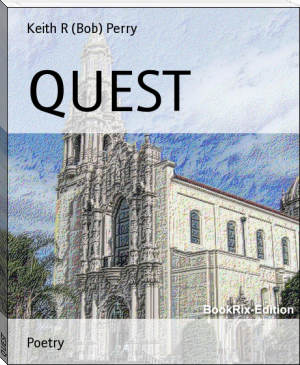The Ship of Fools, Volume 1-2 - Sebastian Brant (thriller books to read TXT) 📗

- Author: Sebastian Brant
- Performer: -
Book online «The Ship of Fools, Volume 1-2 - Sebastian Brant (thriller books to read TXT) 📗». Author Sebastian Brant
Morality, by Bulleyn, than the one_, [which I have used], an account of and
some extracts from it may not be unpleasing.” The passage regarding the
poets is of course given ad longum.
The next notice of the Dialogue occurs in Herbert’s Ames (1786), where two
editions, 1564 and 1578, are entered. Dibdin (1819), in addition, notices
the edition of 1573. In the biographical accounts of Bulleyn in
Hutchinson’s Biographia Medica (1799), Aikin’s General Biog. Dict. (1801),
and its successor, Chalmers’s Biog. Dict. (1812), due mention is preserved
of the Dialogue in enumerating the works of its author. Sir Walter Scott
alludes to it in the Introduction to the Minstrelsy of the Scottish Border
(1802) as a “mystery,” but his only knowledge of it is evidently derived
from Waldron. Chalmers’s Life of Lindsay (Poetical Works, 1806) has also
kept it prominently before a considerable class of inquirers, as he gives
that part of the description of the poets relating to Lindsay a conspicuous
place, with the following note: “Owing to the very obliging temper of Mr
Waldron I have been permitted to see that rare book of Dr Bulleyn, with
the second edition of 1569, which is remarkably different from the first in
1564.” To this use of it by Chalmers we owe the references to it in Lord
Lindsay’s Lives of the Lindsays, i. 261 (1849), Seton’s Scottish Heraldry,
480 (1863), and Notes and Queries, 3rd s., iv. 164 (1863). It was also
probably Chalmers that drew the attention of the writer of the Memoir of
Barclay in the Lives of the Scottish Poets (1822), to the possibility of
there being also in the Dialogue notice of that poet. At any rate, he
quotes the description of the early poets, showing in his preliminary
remarks considerable familiarity with Bulleyn’s history, pointing out the
probability of his having known Barclay at Ely, and arguing that whether or
not, “from living in the same neighbourhood he had an opportunity of
knowing better than any contemporary whose evidence on the subject is
extant, to what country Barclay was, by all about him, reputed to belong.”
He precedes his quotations thus: “As the whole passage possesses
considerable elegance, and has been so universally overlooked by the
critics, the transcription of it here will not probably be deemed out of
place.” No mention is made of the title of the book from which the
“Allegorical Description of the Early English Poets” is taken; hence it is
impossible to say whether the quoter made use of a copy of the Dialogue, or
of Waldron’s Notes. The spelling is modernised.
In various well-known bibliographical publications the existence of this
fugitive Dialogue is carefully registered, and its title, at least, made
known to all inquirers,—in Watt’s Bibliotheca Britt. (1824), in Lowndes’
Bibliog. Manual (1834), and in Atkinson’s Medical Bibliog. (1834); and by
the published Catalogues of the British Museum (1813), the Douce Collection
(1840), and the Bodleian Library (1843), it is made known that there are
copies of it preserved in these great collections. In Warton’s Hist. of
Eng. Poetry (ed. 1840), it is also recorded by Park, in his notes to the
chapter on Gower, in which he refers to Bulleyn’s visionary description of
that poet. Cooper’s Athenæ Cantabrigienses, art. Bulleyn (1858), also
carefully notes the Dialogue and its editions. And in 1865 Collier’s
well-known Bibliographical Account of Early English Literature again gives
an account (two pages long) of the much neglected production, in which the
passage relating to the poets is once more extracted in full, with the
preliminary remarks as quoted at p. xxvii. supra, but without the usual
announcement that the work has hitherto been unknown.
But in 1873, by the very last man from whom we might have expected it (F.
J. Furnivall, the Atlas on whose shoulders all our projects for the
preservation of our early literature rest, in Notes and Queries, 4th s.,
xii. 161), we are again introduced to this ever disappearing, ever
reappearing Dialogue as a fresh find in early English literature: “Few
things are pleasanter in reading old books than to come on a passage of
praise of our old poets, showing that in Tudor days men cared for the
‘makers’ of former days as we do still. To Mr David Laing’s kindness I owe
the introduction to the following quotation from a rare tract, where one
wouldn’t have expected to find such a passage,” and then follows once more
the whole passage so often quoted for the first time. Dr Rimbault, in an
interesting note in a succeeding number of Notes and Queries (p. 234), is
the first one acquainted with the Dialogue to state that “this amusing old
work is perfectly well known, and has often been quoted from.” So
henceforth we may presume that this interesting and long-fertile field of
discovery may be regarded as finally worked out.
[Illustration]
*
A BIBLIOGRAPHICAL CATALOGUE OFBARCLAY’S WORKS.
CONTENTS.
*
I. THE CASTELL OF LABOURE.
II. THE SHYP OF FOLYS.
III. THE EGLOGES.
IV. THE INTRODUCTORY.
V. THE MYRROUR OF GOOD MANERS.
VI. CRONYCLE COMPLYED BY SALUST.
VII. FIGURE OF OUR MOTHER HOLY CHURCH.
VIII. THE LYFE OF SAYNT GEORGE.
IX. THE LYFE OF SAYNTE THOMAS.
X. HAYTHON’S CRONYCLE.
I. THE CASTELL OF LABOURE.—Wynkyn de Worde. 1506. Small Quarto. Black
letter.
The title, “The castell of laboure,” is within a scroll above a woodcut
of men over a tub: on the verso, a cut of a man sitting at a desk. At
sign. a ii. (recto) “Here begynneth the prologue of this present
treatyse.” [The Brit. Mus. copy has this on the verso of the title
instead of the cut, a peculiarity which may entitle it to be called a
separate edition, though it appears to agree otherwise with the copy
described.] There are many curious woodcuts. Colophon on the reverse of
sign. i iii. (51^b): “Thus endeth the castell of labour, wherin is
rychesse, vertue, and honour. Enprynted at London in Fletestrete in the
sygne of the sonne. by Wynkyn de worde. Anno d[=n]i M.ccccc.vi.” There
is no indication of authorship. Signatures: a b c d e f g h,
alternately 8s and 4s, i 4; 52 leaves, not numbered. The British Museum
and Cambridge University Library copies of this book have been
collated, but as the former ends with H 3 and the latter wants the last
leaf, that leaf must remain undescribed. Mr Bradshaw, however, says,
“it almost certainly contained a woodcut on the recto, and one of the
devices on the verso.”
A copy of this very scarce book was sold among Mr. West’s books in 1773
for £2.
I.a. THE CASTELL OF LABOURE.—Pynson. No date. Small Quarto. Black letter.
The title, “Here begynneth the castell of laboure,” is over a woodcut;
and on the reverse is a woodcut; both the same as those in the previous
edition. In the body of the work there are 30 woodcuts, which differ
from those of the first edition, one of these (at G 6) is a repetition
of that on the title page. Colophon: “Thus endeth the castell of labour
wherin is rychesse, vertue and honoure. Enprynted be me Richarde
Pynson.” After the colophon comes another leaf (I 6), on the recto of
which is the printer’s device, and on the verso a woodcut representing
a city on the banks of a river. Without indication of authorship.
Signatures: A, 8 leaves; B—I, in sixes.
“Neither Ames nor Herbert appear to have seen this rare volume; which
is probably a reprint of Wynkyn de Worde’s impression of 1506.”
(Dibdin’s Typ. Antiq., II. 557.) There is a copy in the Library of H.
Huth, Esq.
*
II. THE SHIP OF FOLYS OF THE WORLDE.—Pynson. 1509. Folio.
On the recto of the first leaf there is a large woodcut of Pynson’s
arms, or device No. VII., similar to that which is on the reverse of
the last leaf of each of the volumes of his edition of Lord Berners’
translation of Froissart’s Chronicles; on the back of the first leaf is
the translator’s dedication to “Thomas Cornisshe, bishop of Tine, and
suffragan bishop of Bath;” on the next leaf begins “The regyster or
table of this present boke in Englyshe,” (all as on pp. cxiii.—cxx.),
succeeded by a Latin table. Then on sign. a i. and fol. i. a large
woodcut, the same as is used for the title page of Cawood’s edition
(and on p. 313, Vol. II.), with a Latin description in the margin.
Beneath is the title in Latin. On the back, “Alexander Barclay
excusynge the rudeness of his translacion,” followed with “An
exhortacion of Alexander Barclay.” Then on fol. ii., etc., follow in
Latin, “Epigramma,” “Epistola” in prose, and various “Carmina.” On the
back of fol. v. “The exhortacion of Brant to the fools” in Latin verse,
followed by Barclay’s version with the heading “Barclay the Translatour
tho the Foles.” On fol. iiii. the “Prologus Jacobi Locher … incipit,”
followed by its translation into English. On fol. ix., etc.,
“Hecatastichon in proludium auctoris et Libelli Narragonici” and the
English translation, “Here begynneth the prologe.” On xii. “The
Argument” in Latin and English, and then on xiii. commences the first
chapter, “De inutilibus libris,” in Latin, and then in English, which
is the order throughout, with the cuts at the beginning of either the
one or other as the page suited. The book concludes with a ballad in
honour of the virgin Mary, consisting of twelve octave stanzas: at the
end of which is the colophon in a stanza of seven lines. On the verso
of the last leaf is the printer’s device, No. v.
The Latin is uniformly printed in the Roman type, and the English in
the Gothic. Herbert supposes the diphthongs to be “the first perhaps
used in this kingdom.”
The cuts are rude, coarse, English imitations of those in the original
editions. They are, including the preliminary one, 118 in number. The
cut illustrating the chapter, “Of them that correct other,” etc., fol.
liii. has been exchanged with the cut of the succeeding chapter. The
cut illustrating “The unyuersall shyp and generall Barke,” fol.
cclxii., is repeated at the succeeding chapter. The one illustrating
Barclay’s new chapter “Of folys that ar ouer worldly” is an imitation
of the illustration of “De singularitate quorundam novorum fatuorum” in
the Latin edition of March 1497. The cut illustrating the ballad of the
Virgin appears in the original at the head of “Excusatio Jacobi Locher
Philomusi,” and illustrates, according to the margin, “Derisio boni
operis.”
The word “Folium” is on the left hand page, and the number, in Roman
capitals, on the right throughout the book; the last is cclxxiiii.
Including the dedication and table (4 folios) there are 283 folios. The
numbering is a model of irregularity: iiii. is repeated for vi., xx.
stands for xv., xviii. is repeated, xx. is wanting, xxii. is repeated,
xxiv. is wanting, xxx. is repeated, xxxvi. is wanting, xxxix. is
repeated in place of xliv., xlviii. is wanting, xlix. is repeated, lvii
is repeated after lxi., lviii follows twice, lix., lx., lxi. being
repeated in succession after lviii., lxvii., lxviii. are repeated after
lxviii., lxxxii. is wanting, lxxxiii. is repeated, lxxxii. stands for
lxxxvii., lxxxiii. succeeds for lxxxviiii, cclxv. succeeds for lxxxix.,
lxxxxii. is repeated for lxxxxvii., [in the Grenville copy this leaf is
correctly numbered], cxxxii is wanting, cxl. stands for cxxxviii.,
cxlxi. stands for cxlvi., clxxiv. is wanting, clxxxxxi. stands for
cci., ccxii. is repeated for ccxvii., ccxxxviii. is wanting, cclx.
stands for ccl., cclviii. is repeated for cclx.
The numeration by signatures is as follows: + iiij; a, 8; b—p, 6 s; q,
7; r,





Comments (0)